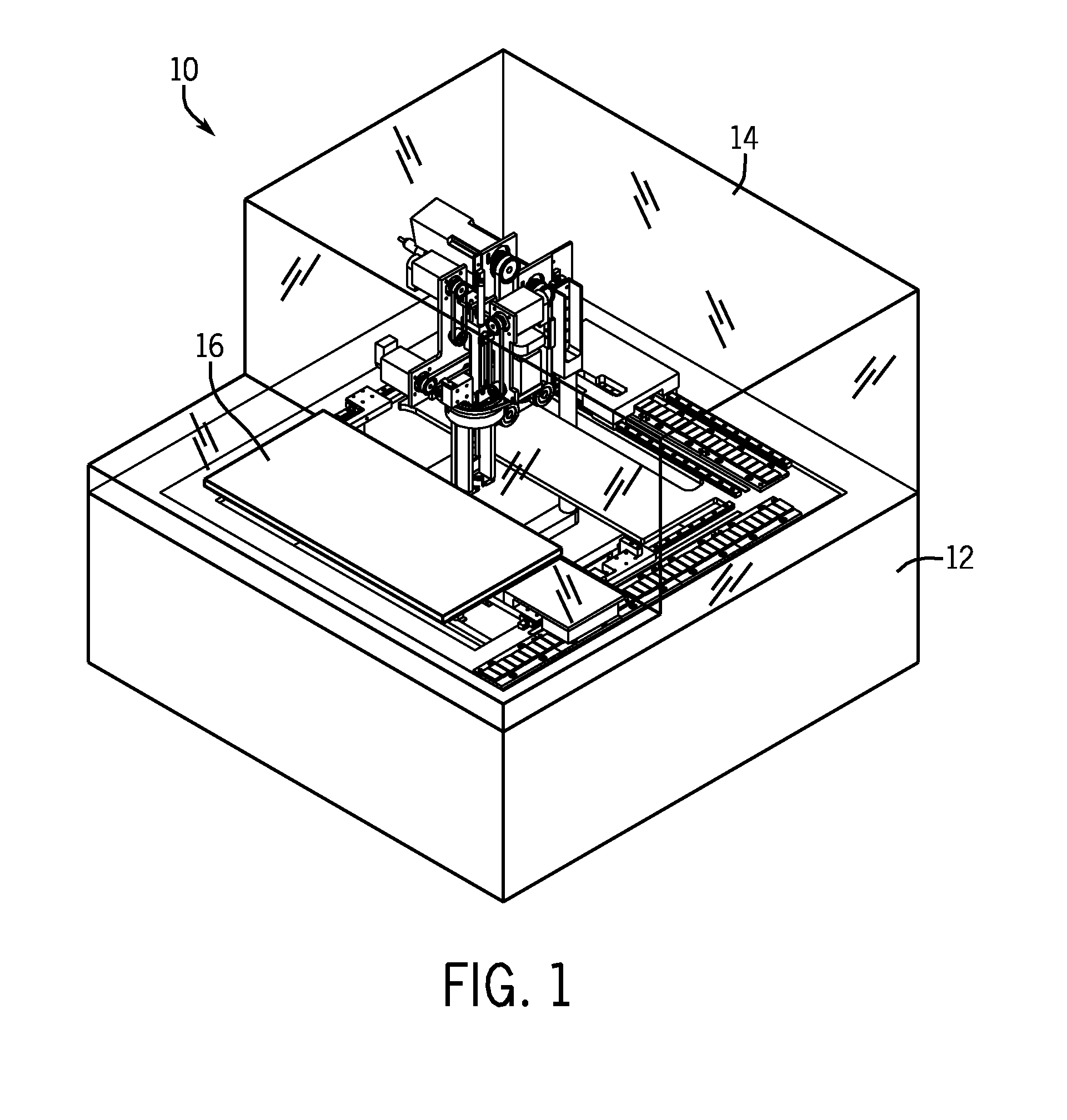Tube Picking Mechanisms with an Ultra-Low Temperature or Cryogenic Picking Compartment
a technology of which is applied in the field of tube picking mechanism, can solve the problems of not being able the environment within the ultra-low temperature or cryogenic freezer compartment is typically too cold to ensure reliable operation of conventional tube picking mechanism, and it is not normally desirable to remove an entire sbs tube rack. , to achieve the effect of reducing ice and frost formation, dispersing to the surrounding environment, and different dimensions
- Summary
- Abstract
- Description
- Claims
- Application Information
AI Technical Summary
Benefits of technology
Problems solved by technology
Method used
Image
Examples
Embodiment Construction
[0039]FIG. 1 is a perspective view of a tube picking mechanism 10 that is constructed in accordance with a first exemplary embodiment of the invention. The tube picking mechanism shown in FIG. 1 includes a chamber 12 that is refrigerated to an ultra-low temperature (e.g., below −50° C. and desirably about −80° C. in most non-cryogenic applications) when the tube picking mechanism 10 is in operation. The tube picking mechanism is designed to be used to pick tubes from racks stored in an ultra-low temperature freezer system. In a typical ultra-low temperature application (e.g., about −80° C.) it is desirable that the temperature of the refrigerated chamber 12 be cooled to the temperature or near the temperature at which samples are stored in the system freezers; however, the invention is not limited to this condition. For example, as mentioned above in the event that the tube picking mechanism is used in connection with a cryogenic freezer system, it will normally be desirable to cool...
PUM
 Login to View More
Login to View More Abstract
Description
Claims
Application Information
 Login to View More
Login to View More - R&D
- Intellectual Property
- Life Sciences
- Materials
- Tech Scout
- Unparalleled Data Quality
- Higher Quality Content
- 60% Fewer Hallucinations
Browse by: Latest US Patents, China's latest patents, Technical Efficacy Thesaurus, Application Domain, Technology Topic, Popular Technical Reports.
© 2025 PatSnap. All rights reserved.Legal|Privacy policy|Modern Slavery Act Transparency Statement|Sitemap|About US| Contact US: help@patsnap.com



